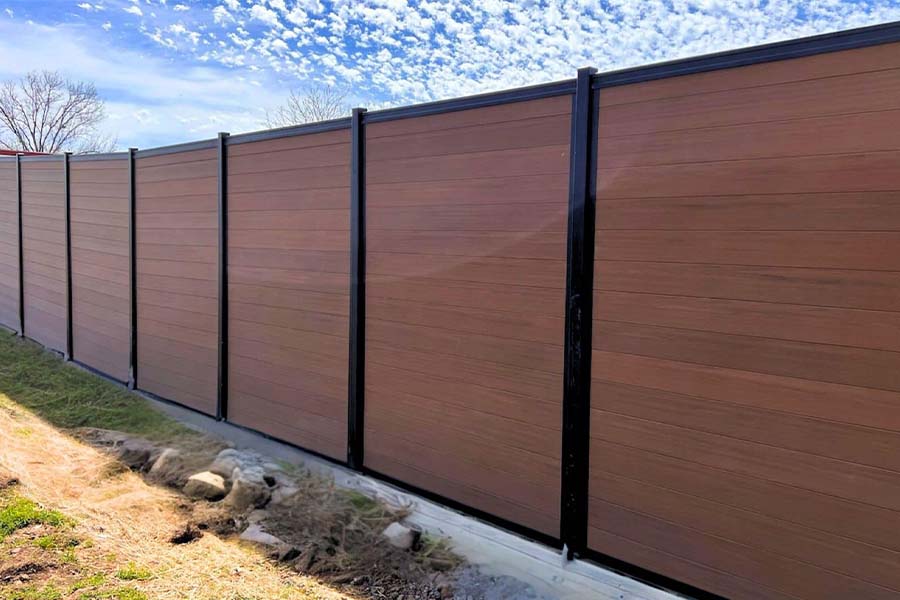Featured

When considering setting up a fence on your building, one of the most crucial steps is to understand whether you need a license. The details authorizations needed can vary depending on your location, the kind of fencing you prepare to set up, and the elevation or positioning of the fence.
Why You Need a License for a Fence Installation. The permit procedure helps regional authorities confirm that your fence does not interfere with website traffic exposure, respect your residential property lines, or violate elevation constraints. Installing a fence without a permit can result in fines, removal of the fencing, or delays in construction, so it's essential to examine whether a permit is called for before beginning your task.
Sorts Of Authorizations You Might Require. There are a couple of usual kinds of licenses you may need for a fencing installation:
Building Authorization. A building permit is the most common authorization needed for fence setups. This authorization ensures that the fence meets safety criteria and is built according to local building ordinance. A building license is normally needed if the fence exceeds a certain height (commonly 6 feet), is constructed from specific products, or is situated near a public sidewalk or roadway.
Zoning Permit. A zoning license may be required to validate that your fence follows neighborhood zoning laws. Zoning laws can determine where a fence can be put on your residential property, exactly how high it can be, and whether it is admitted certain areas (such as along property lines or ahead backyards) For instance, some districts have guidelines limiting the height of fences in the front lawn to ensure exposure for pedestrians and drivers.

Setback Authorization. You might require a trouble license if you are building a fencing near your home line or close to a road. A trouble refers to the range a structure, consisting of fences, should be from the home line. Trouble laws differ by place, and guaranteeing that your fence is placed properly can protect against problems with next-door neighbors and stay clear of violations.
Property Owner Organization (HOA) Authorization. If you live in a neighborhood controlled by a Property owner's Association (HOA), you may require authorization from them in addition to regional licenses. HOA guidelines usually cover the type of materials, elevation, design, and shade of fencings. Even if your local government does not need a permit, your HOA may still have certain standards that require to be adhered to.
Just How to Obtain a Fencing License. To look for a fencing permit, you'll require to contact your regional structure department or preparation workplace. The application procedure typically entails completing a type, paying a fee, and submitting a site plan of your residential property that shows the recommended location of the fencing. You might additionally need to include details about the materials, height, and design of the fencing.
Sometimes, a neighborhood official might need to check your residential property prior to authorizing the permit. Once the authorization is approved, you will certainly be authorized to wage your fence installment.
When Is a License Not Required? In certain scenarios, a permit may not be called for. These circumstances can consist of:
Low Height Fences: In numerous locations, fencings that are below a specific elevation (typically 3 to 4 feet) may not require a license, specifically if they are positioned in the backyard or other non-visible locations.
Fencing Replacement: If you're replacing an existing fencing with the same elevation and material, some areas may not call for a new authorization.
Non-Obtrusive Fencings: Temporary or ornamental fences, such as those made use of for gardening or landscaping purposes, might not require authorizations as long as they are reduced and not permanent.
Nonetheless, it is essential to consult your regional zoning office or building division, as laws can vary by territory.
Consequences of Not Acquiring a Permit. Falling short to obtain the necessary licenses can result in substantial effects. These consist of penalties, forced elimination of the fencing, and even hold-ups in construction. Additionally, if your fencing does not meet regional regulations, you might deal with lawful concerns with next-door neighbors or neighborhood authorities.

Verdict. When setting up a fencing, it's important to investigate the permit demands in your area. By making sure that you comply with regional laws and acquire the required permits, you can ensure and avoid expensive mistakes that your fencing is legally certified. Get in touch with your regional building division, HOA, and zoning workplace to establish what authorizations are needed for your particular fence job. This action is important to secure both your investment and your residential property's value.
Latest Posts
NAPA AutoCare Certified: Trust Montclare Auto Repair for Quality Service
Published Apr 20, 25
2 min read
Exploring Quality with A-Abel Roof's Gallery
Published Apr 20, 25
1 min read
Contact Montclare Auto Repair for Expert Help - Reliable Service Awaits
Published Apr 19, 25
2 min read
More
Latest Posts
NAPA AutoCare Certified: Trust Montclare Auto Repair for Quality Service
Published Apr 20, 25
2 min read
Exploring Quality with A-Abel Roof's Gallery
Published Apr 20, 25
1 min read
Contact Montclare Auto Repair for Expert Help - Reliable Service Awaits
Published Apr 19, 25
2 min read